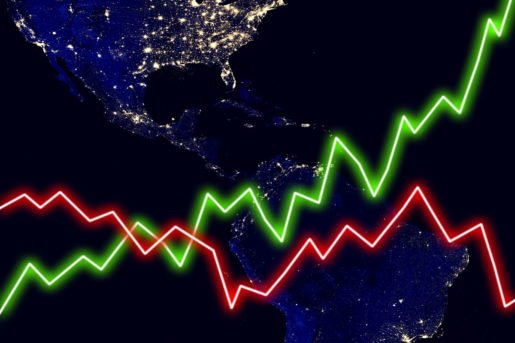A price war between the oil powers is leaving many producers in Latin America struggling to cover their extraction costs. It increases the chances of increasing cuts and delays in investment in the next few months.
Benchmark oil contracts are suffering their most significant declines in decades due to a perfect storm between falling demand for the coronavirus epidemic and oversupply due to a dispute between Saudi Arabia and Russia over production cuts.
WTI crude oil plummeted 29% last week, its most significant drop since the 1991 Gulf War. In the past two weeks, the US benchmark has lost about half its value, while Brent about 40% has sunk.

Heavy oils in Latin America, accumulated a 42% drop, leaving some products with single-digit prices. Experts and analysts expect a global demand contraction of at least 10% this year.
Latin American operators say the recovery from these low prices will not be rapid. The destruction of demand will be followed by layoffs, production cuts, and postponed investments.
Between 2019 and the beginning of 2020, the average cost to produce a barrel of crude oil in the oil-producing nations of Latin America (Brazil, Mexico, Venezuela, Colombia, and Ecuador) was close to $13, excluding indirect costs and taxes.
The data was based on figures provided by Colombia’s Ecopetrol, Ecuador’s Petroecuador, Mexico’s Pemex, and Brazil’s Petrobras, as well as experts with knowledge of Venezuela’s PDVSA.
- Check-out MyForexNews comprehensive Review on Pepperstone
Demand for Latin American oil has Begun to Collapse
But the global price war has dried almost all spot sales of Latin American oil since last week. It left regional benchmarks like Mexico’s Maya at a weekly price of around $ 16 a barrel. In comparison, the cost of the Venezuelan Merey has fallen to just $ 8 per barrel.
The US is the leading barometer for Latin American crude. Since the nation paralyzed its activities, the demand for fuel in the US is plummeting. As a result, the appetite for heavy oil in the Gulf of Mexico has also begun to collapse.
On March 18, the price of Mexico’s Maya fell to rates not seen in 18 years, and most sales to the US Gulf coast ended the session below $13 a barrel. The situation generated panic among neighboring producers.
Sending Latin American crudes to more distant markets like Asia has provided an outlet for oil. Still, if shipping rates rise amid growing demand for floating storage, that route could also be closed in the coming months, operators said.
The Most Vulnerable Markets
More expensive production operations may be forced to reduce extraction or close it. Extra-heavy crudes that need upgraders are also at risk.
The fall in prices could also have a substantial impact on countries facing production inefficiencies and more radical government measures such as Mexico and Ecuador. As well as companies facing high transportation costs, such as those operating in Colombia.
UBS, the investment firm, said in a note that Petrobras should have slower development in investment. In contrast, Ecopetrol and YPF would have difficulties because their balance point is at $ 30 and $ 40 per barrel, respectively.
Ecuador’s energy minister René Ortiz told Reuters that Petroecuador’s production costs are in the range of $ 15 to $ 19 a barrel. He said that the production continues uninterruptedly.
Meanwhile, Venezuela’s PDVSA, Pemex, and Argentina’s YPF did not immediately respond to requests for comment. Petrobras declined to comment.
















